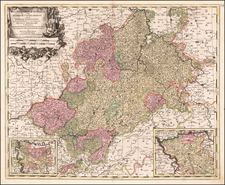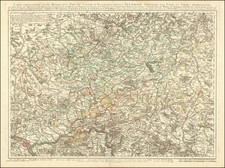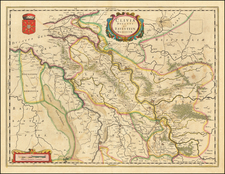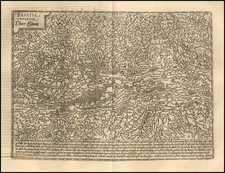Hodierna Sedes Electoris Palatini Manheimium Ichno- et Scenographice novissime exhibitum, dated 1725, presents a detailed and striking plan of Manheim created by the renowned cartographer Johann Christoph Homann. This plan captures the cityscape, prominently highlighting the fortified walls of Manheim and the majestic flow of the Rhine River at its borders.
During the early 18th century, European cities were amidst an age of burgeoning development and growth. The Holy Roman Empire's political shifts and territorial expansions meant that key cities, such as Manheim, held strategic importance. As the seat of the Elector Palatine, Manheim represented a confluence of political, military, and cultural significance. The fortifications captured in this plan are a testament to its strategic importance, safeguarding it from potential adversaries.
Homann's abilities shine through in the map's precision, offering not just a geographical representation but also encapsulating the architectural nuances of the city during the period. The bird's-eye view, titled Prospect der Churf. Residenz St. Manheim, further enriches the visualization, providing a panoramic perspective of the city's expanse.
The inclusion of the Rhine River is not merely a geographical feature but stands as a symbol of the city's trade and communication arteries. This major European waterway was pivotal for Manheim's commerce, facilitating the movement of goods and people.









![[Frankfurt-am-Rhein] Novam Hanc Territorii Francofurtensis Tabulum Nobilissis Magnificis, Amplimisis Prudentissimisque Dominis . . .](https://storage.googleapis.com/raremaps/img/small/86355.jpg)
![[Thuringa] Sectio Inferior, Ducatum Vinariensem, nec non Isenacensis, Partes Boreales et Orientales, Principatum Querfurtensem, ut et Territorium Erfurtense, Comitatum Beichlingen, Balisiatum Thuringiae et alia repraesentans](https://storage.googleapis.com/raremaps/img/small/58972.jpg)



